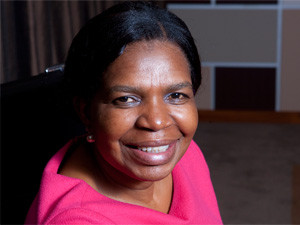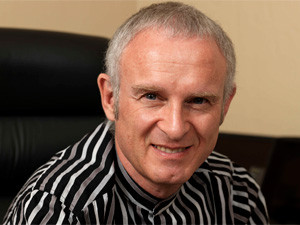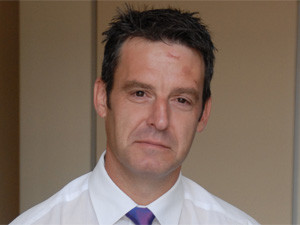
Data-centric technology long-term evolution (LTE), commonly referred to as "4G", is slowly spreading its wings globally, with SA being the latest to unveil a commercial network, by the country's biggest mobile operator, Vodacom.
Do these three letters that have the telecommunications and IT industry abuzz represent a sudden new dimension for the broadband market in SA, or do they really just amount to a lot of hype?
With Vodacom being first to pass the post in the race to launch LTE in the commercial arena earlier this month, and SA's other three mobile network operators following close behind with the imminent launch of their own next-generation networks, there has been much build-up and debate around what LTE really means.
SA's operators have, in effect, been ready to roll out the new technology for about a year now, but certain barriers to entry have left the data-hungry market salivating at the thought of - but having to sit and wait for - a new, superior broadband experience.
Now that the LTE ball has been set rolling, industry observers say SA has a lot to look forward to in terms of enhanced wireless connectivity, even if flawless fast broadband does not happen right away. The bottom line, say experts, is that it beckons progress and is a step up and in the right direction.
LTE has the potential to operate at more than double the speed of any mobile connection currently commercially available in SA and will provide significant multiples faster than the 2G and 3G connections common across the country. Theoretically, LTE could offer downloads as fast as 299.6Mbps and uploads up to 75.4Mbps.
With the Internet having become such an integral part of working people's lives, as well as a vital one for home users, and the data demands of current and emerging Internet applications being so high, MD of World Wide Worx Arthur Goldstuck says LTE is arriving just in time to meet these growing requirements. "We can no longer afford to rely only on 3G."
He says to view LTE as a "nice to have" would be a mistake. "You'd be falling into the same trap as those who saw the Internet as a 'nice to have' in the 1990s, and mobile broadband as a 'nice to have' in the past decade."
4G or not 4G?
Visit almost any media forum where the topic of LTE is featured, and you are bound to see posts criticising the industry's use of "4G" to refer to this technology.
While, technically speaking, LTE does not equal 4G, the vast majority of international operators (81%) have accepted the use of this term for reference to the latest version of 3G. But, in the current context, this is a marketing term, rather than a technology.

LTE is a telecommunications standard for high-speed wireless data access. At the end of 2010, the International Telecommunication Union (ITU), the global wireless standards-setting organisation, determined 4G to be defined as a network capable of download speeds of 100Mbps. LTE - fourth-generation wireless communication services - is based on high-speed wireless data access technology, hence the tag "4G", although technically it is 3.9G (beyond 3G, but pre-4G). Neither Vodacom's commercial LTE launch, nor services the other networks are working on and trialling, meet the ITU standards for 4G.
LTE Advanced (LTE+) is the next milestone in the evolution of LTE technology - and this can be rightfully referred to as 4G as it will be ITU-compliant, but this - true 4G - is not on the cards yet.
LTE windfall
Richard Hurst, Ovum's emerging markets analyst, says the key to LTE lies in what it will do for the broadband market. "[LTE] will start to unlock the broadband market a little more for both the operators and the users - be they enterprise or consumers.
"LTE will be another platform, but it will deliver higher-speed broadband services, implying that users will be able to do more with their connections," he says.
Vodacom says the higher speed and lower latency synonymous with LTE translates into a more stable user experience with stutter-free video, gaming and almost instantaneous music and picture downloads.

Dobek Pater, analyst at Africa Analysis, says LTE will present effective competition to ADSL in terms of performance and will be a good alternative for SMEs and high-end residential users. "The future of broadband services in SA is predominantly mobile, although fixed-line will continue to play a large role."
He says, however, this must be looked at from a longer-term perspective. Over time, prices of LTE services will decrease and the technology will be deployed widely enough to also benefit consumers beyond just the high-end, large urban area residents.
"It is also a very good solution for driving workforce mobility. The demand for bandwidth is increasing in both the business and the consumer market segments. We may not consider broad segments of the SA society as having a need for LTE-delivered services now, but this is changing and the picture will look very different in five years' time when LTE becomes more of a mainstream technology in SA."
Goldstuck says an upside of LTE lies in capacity and capability. "LTE is a far more efficient form of mobile broadband, which improves the experience, both from a speed and performance point of view, in the sense that far more people can simultaneously experience a reasonably fast connection."
But the primary benefit of LTE, according to Goldstuck, is that it has the potential to match the performance of ADSL in terms of quality and throughput - while exceeding its speeds. "This means that it overcomes the bottleneck represented by ADSL being provided by a single supplier, which has meant - for many small businesses and individuals - a long wait for a good broadband connection.
"It also overcomes the high entry-level cost of ADSL, which entails both fixed-line rental and ADSL line rental - two barriers to entry that have helped mobile broadband flourish."
According to a World Bank report on broadband in developing countries, every 10% increase in broadband connection boosts economic growth by 1.38%.
Goldstuck says it has become a given that growth in broadband penetration boosts an economy - but "one could go further and say that an improvement in broadband quality must also boost the economy, and ultimately benefit the whole country".
Pater says he suspects better broadband connectivity - including LTE - will also result in more business efficiencies and better economic growth for SA. "However, it is important to realise that broadband is not isolated.
"Government policies, for instance, have a significant impact on economic growth. Therefore, we could be the best broadband-wired country in the world, but if the government of SA continues to pursue policies and laws that hamper economic growth, faster broadband access is not going to help us."
LTE outlook
LTE is the first technology built specifically for wireless broadband and, according to the Global mobile Suppliers Association (GSA), it is also the fastest-developing mobile system technology ever. The GSA also positions LTE as entering a new phase as mainstream technology by the end of 2012.
Analysts concede that, as much as the advent of LTE has raised optimism in the industry, there is still a long way to go until it is satisfactorily pervasive. This is the same situation, they say, experienced with the likes of previous-generation technologies, like 2G and 3G, which are, for all intents and purposes, also not yet optimal.
There are a number of hurdles along the road to LTE - namely the indecisiveness of the Department of Communications (DOC) and the Independent Communications Authority of SA (ICASA) in the allocation of spectrum for LTE, the current lack of compatible devices, the untested pricing model for data, and the lack of national fibre.
But these things are incidental, says Pater. The fact that LTE technology is "inevitable and necessary" means that a start must be made in spite of them.
This attitude is evident in SA as operators weigh up their options and forge on towards commercial deployment.
MTN expects to turn on LTE by the end of the year in Johannesburg, Pretoria and Durban. CTO Kanagaratnam Lambotharan said recently that Cape Town is also being looked at, but there are challenges with re-farming spectrum in the area. Having been trialling the technology for over a year now, Vodacom's runner-up says it plans to have between 400 and 500 LTE sites live before 2013.
Like Vodacom, MTN is re-farming some of its spectrum in the 1 800MHz range for LTE deployment - as a stopgap measure until the DOC and ICASA have come to a decision and taken action on the allocation of the apposite spectrum bands.
While SA's third entrant in the mobile space, Cell C, has been less vocal on its LTE plans up to now, it says it is going to be rolling out LTE towers in select areas over the next few months, covering areas where there is fibre to the base station.
Ideally, says Cell C CEO Alan Knott-Craig, he would like to see spectrum given to a consortium of companies that could roll out a national wholesale LTE network.
Telkom's mobile arm, 8ta, has also been testing the new technology for about a year and is now offering trial LTE to qualifying applicants in Gauteng - for free between November and the end of March next year.
Predecessor position
The older 2G and 3G technologies, say analysts, will still be instrumental as the country moves forward in its pursuit of pervasive broadband.
Goldstuck points out: "2G hasn't disappeared just because 3G is pervasive. The network has been built, it covers something like 98% of the country, and it serves the purposes of voice and SMS, so there is no inevitability about it being done away with in the near future."
He says the same applies to 3G. "It will take many years for 4G to become pervasive, and in that time the older technologies must provide the stopgaps. By the time 4G has become pervasive, we will be having the same debate about the next generation communications technology.
"Bear in mind that 3G was launched in December 2004 at R50 per MB of data downloaded. While that came down to R2/MB within six months and the ad hoc data price didn't move again for another five years, it was a start. If we had said then that we shouldn't do it because only a few could afford it, we would not be in a position now where it has passed 10% penetration. We can expect 4G to be at this point by 2020."
Pater says neither 2G nor 3G will disappear in the wake of the new generation technology. "3G will be more broadly deployed to service areas outside of LTE coverage and it will remain (at least for the next several years) in parallel with LTE as a lower-cost (to end-users) mobile broadband alternative.
"2G may be eventually discontinued once a critical mass of users has adopted voice over IP over mobile broadband, for instance. For example, AT&T in the US plans to discontinue 2G services in 2017, but in SA we will continue to have many basic voice users beyond that."
He says, in his opinion, LTE could become a mainstream technology in about five years' time but "predominantly in large urban areas, not nationally".
Hurst says in terms of the number of connections over the next five years, the 3G technology HSPA will still dominate as the mobile or wireless broadband connection. "LTE will start to make inroads over the period, but is likely to be a niche service over the next two years before gaining some ground."
Spectrum dormancy
The issue of spectrum allocation has been the bane of operators for years due to perpetual dithering by the DOC and ICASA.
Allocating more spectrum in the 2.6GHz and 3.5Ghz ranges has been on the cards since 2006, but invitations to apply for frequency in the bands were withdrawn in June 2010. Since then, there has been little movement towards auctioning the spectrum, which is vital for operators to move to the next generation of technology.
Last December, ICASA decided to allocate space in the coveted 2.6GHz and 900MHz ranges, and ditched the idea of awarding spectrum in the 3.5GHz band.
While this gave operators some hope, the way ICASA wanted to go around allocations irked operators and the whole idea was abandoned again earlier this year.
ICASA said this was to make sure communications minister Dina Pule's policy direction on high-demand spectrum is "taken into consideration". Pule subsequently said she would provide ICASA with policy direction for the assignment of high-demand spectrum in May of this year, but this did not come to pass.
According to Gladys Mujuru, ICT research analyst at Frost & Sullivan, LTE, theoretically, can operate in any spectrum; "however, the choice of spectrum has implications for bandwidth capacity, coverage and investment required in deploying the network".
Hurst says this is the main issue surrounding the tardiness and complications surrounding LTE rollout in SA. "The existing LTE rollouts are in the re-farmed 1 800MHz spectrum, which will further muddy the waters when it comes to rollout. In addition, operators will be taking a cautious attitude to LTE investments looking at developing the business case fully before expanding their networks."
Goldstuck's stance on the spectrum issue is resolute and similarly points to the problems inherent in the methods operators have had to employ because of it. "The networks have been ready for the past year to begin rolling out LTE. The indecision of the DOC has forced them to 're-farm' spectrum, ie, allocating spectrum from other frequencies that are not intended for LTE, so that the form of LTE we are getting is less efficient than what is possible."
He concludes that the prime role of the DOC and ICASA should be to create an enabling environment to allow new communications technologies to flourish, rather than to see themselves as gatekeepers that create obstacles in the way of rollout.
"WiMAX will always be the object lesson in how delays in licensing can kill off a promising technology, yet that lesson is completely ignored and in fact rubbed in our faces," he says. "The fact that, after a year of piloting, the networks now have to re-farm spectrum in order to roll out LTE is a national embarrassment, but no one is willing to admit it publicly."
Below is a list of compatible devices that Vodacom customers can now use to experience LTE first-hand, providing the user is in an LTE coverage area:
|
Share